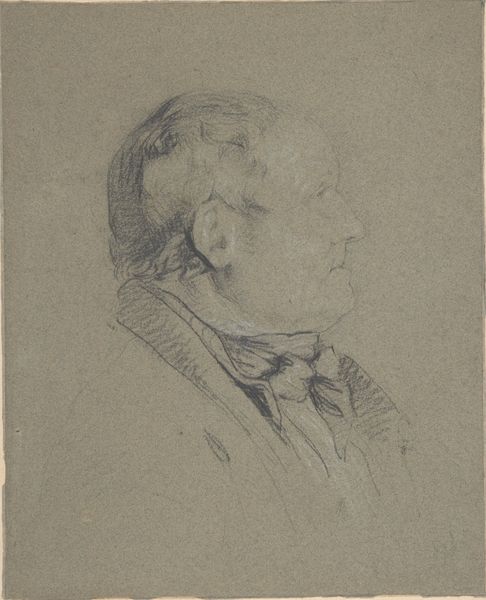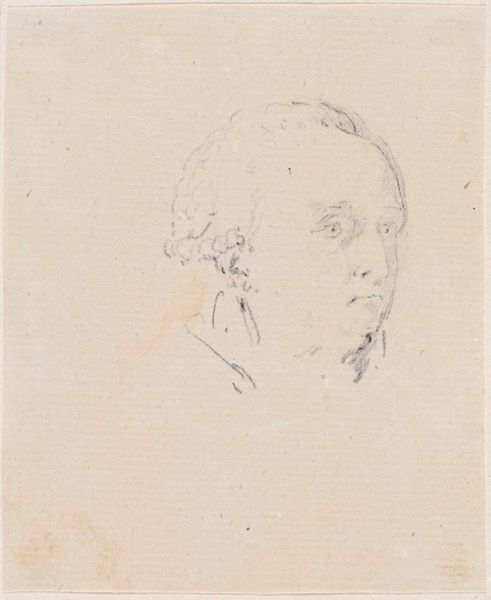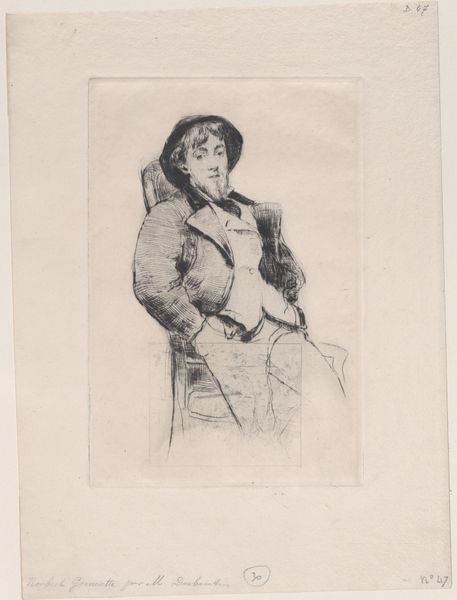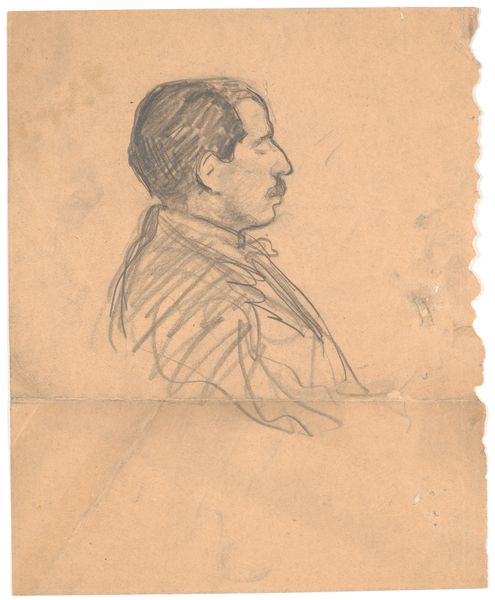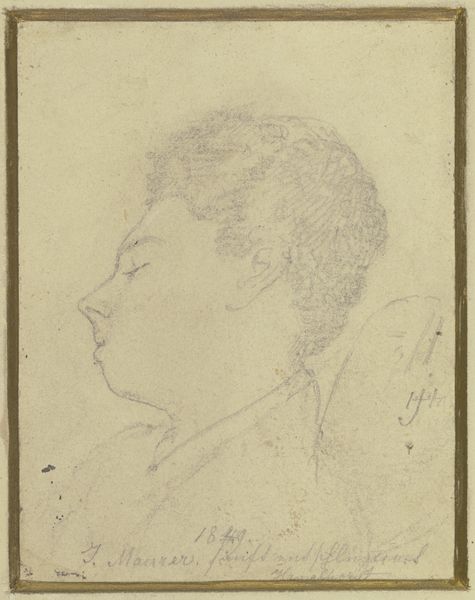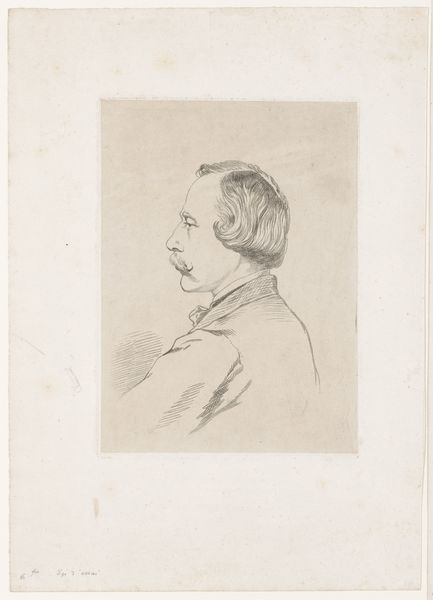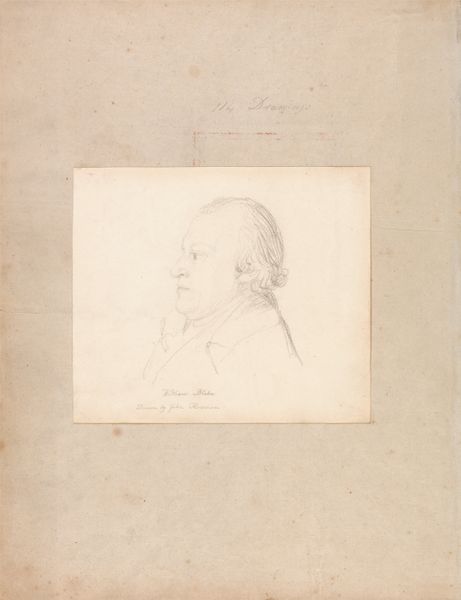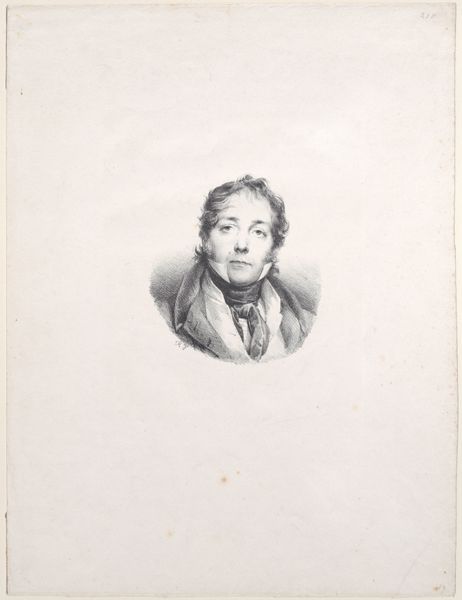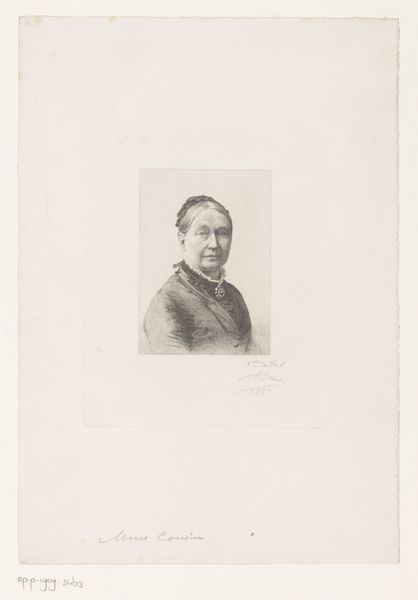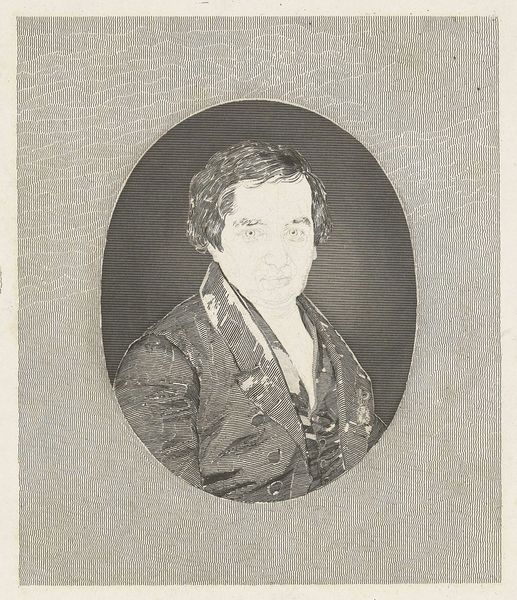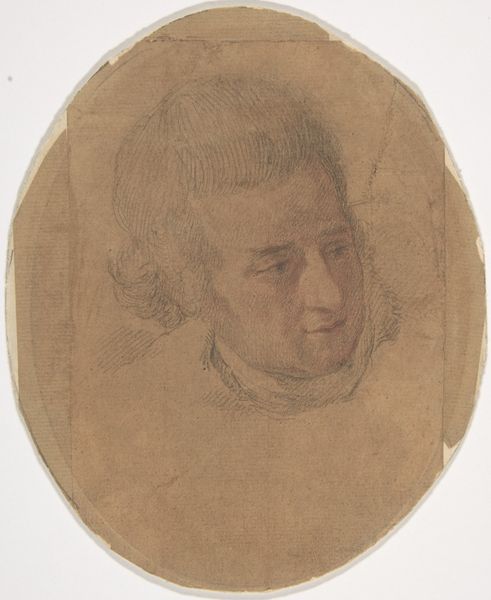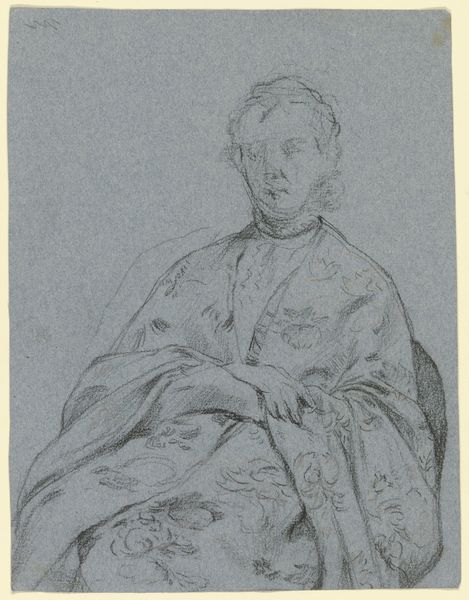
drawing, print, pencil
#
portrait
#
drawing
#
neoclacissism
# print
#
pencil drawing
#
pencil
Dimensions: 15-7/8 x 12-11/16 in. (40.4 x 32.3 cm)
Copyright: Public Domain
Curator: So, here we have "Portrait of a Man," a drawing by Thomas Frye, dating back to 1760, currently housed in the Metropolitan Museum of Art. Frye primarily worked as a printmaker, so this falls right into his expertise. Editor: First impression? It feels… wispy. Like a memory fading. The soft pencil strokes give it a transient, almost ghostly quality. What's he looking at, I wonder? Curator: The gaze certainly evokes a sense of introspection. We can contextualize this drawing within the burgeoning interest in portraiture during the Neoclassical movement, which aimed to capture individual character within a framework of classical ideals, particularly of Roman senators and Greek Philosophers. It seems to draw on visual cultures surrounding ideas of masculinity. Editor: That makes sense. There's a gravitas about him, even though it's just a quick sketch, the essence is so strong. It also makes me wonder what someone back then might have felt looking at art. They were probably used to completely different images representing masculinity! Curator: Exactly. Frye was operating in a society undergoing significant shifts in power dynamics and class consciousness. Consider also how class dictated who could have their portrait made and circulated. Editor: Definitely. You know, there's something kind of punk about a fuzzy pencil drawing subverting notions of fancy painting. Maybe "Portrait of a Man" shows us we are still caught in those systems even now! Curator: Perhaps. By investigating art through the lens of race, gender, class, and historical factors, we can dissect power structures. But it seems art always finds a way to say new things as time progresses, wouldn't you agree? Editor: It certainly does. Thinking about this piece through time has completely shifted my first impression! Thanks!
Comments
No comments
Be the first to comment and join the conversation on the ultimate creative platform.
